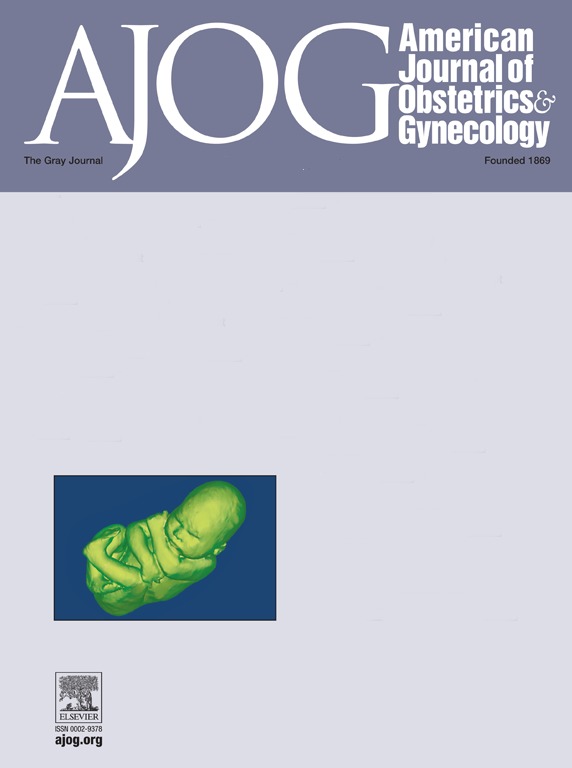妊娠期免疫耐受破坏:慢性绒毛间炎和病因不明的绒毛炎的移植相似之处。
IF 8.4
1区 医学
Q1 OBSTETRICS & GYNECOLOGY
引用次数: 0
摘要
怀孕代表了一种独特的免疫悖论,需要在免疫耐受和保护性免疫反应之间取得微妙的平衡。虽然历史上被认为是半同种异体移植物,但新出现的证据表明,母胎界面是一个高度专业化的免疫环境,具有独特的调节机制。这些机制的破坏与严重的产科并发症有关,包括慢性组织细胞性绒毛间炎和病因不明的绒毛炎,它们表现出与实体器官移植排斥反应惊人的免疫病理相似性。这篇专家综述探讨了母胎免疫耐受的基本原理,重点是补体调节、蜕膜自然杀伤细胞、调节性T细胞和滋养层免疫逃避策略,包括HLA-G表达和细胞外囊泡介导的免疫调节。我们进一步探讨了这些耐受机制的失败如何导致t细胞介导的排斥反应和抗体介导的排斥反应,强调了它们与移植免疫生物学的机制相似性。慢性绒毛间炎和绒毛炎具有T细胞介导的排斥反应和抗体介导的排斥反应的关键组织病理学特征,包括母体细胞毒性T细胞的浸润、供体特异性抗hla抗体的存在以及补体成分C4d在胎盘微血管中的沉积。在母胎界面免疫特权的丧失,以绒毛膜绒毛上异常的HLA I类和II类表达为标志,概括了同种异体移植排斥反应的经典机制。这些发现强烈提示,绒毛间炎和绒毛炎是母体免疫排斥的表现,强调需要有针对性的免疫调节方法。这些见解对开发新的治疗策略具有深远的意义。基于移植医学中使用的方法,新出现的证据支持静脉注射免疫球蛋白、羟氯喹和靶向炎性体抑制在治疗这些产科综合征中的潜在作用。尽管取得了这些进展,但需要进一步研究来完善诊断生物标志物和优化免疫调节治疗。认识到病因不明的慢性绒毛间炎和绒毛炎是免疫排斥综合征,不仅增强了我们对免疫耐受的理解,而且为将移植源性免疫调节策略整合到产科护理中提供了新的途径。涉及产科医生、免疫学家和移植专家的多学科方法将是将这些见解转化为临床实践所必需的。本文章由计算机程序翻译,如有差异,请以英文原文为准。
Immune Tolerance Breakdown in Pregnancy: Transplantation Parallels in Chronic Intervillositis and Villitis of Unknown Etiology.
Pregnancy represents a unique immunological paradox, requiring a delicate balance between immune tolerance and protective immune responses. While historically conceptualized as a semi-allogeneic graft, emerging evidence suggests that the maternal-fetal interface is a highly specialized immune environment with distinct regulatory mechanisms. Disruptions in these mechanisms have been implicated in severe obstetric complications, including chronic histiocytic intervillositis and villitis of unknown etiology, which exhibit striking immunopathological similarities to solid organ transplant rejection. This expert review examines the fundamental principles of maternal-fetal immune tolerance, focusing on complement regulation, decidual natural killer cells, regulatory T cells, and trophoblastic immune evasion strategies, including HLA-G expression and extracellular vesicle-mediated immunomodulation. We further explore how failures in these tolerance mechanisms can lead to T-cell-mediated rejection and antibody-mediated rejection, highlighting their mechanistic parallels with transplantation immunobiology. Chronic intervillositis and villitis share key histopathological features with T-cell-mediated rejection and antibody-mediated rejection, including the infiltration of maternal cytotoxic T cells, the presence of donor-specific anti-HLA antibodies, and the deposition of complement component C4d in the placental microvasculature. The loss of immune privilege at the maternal-fetal interface, marked by aberrant HLA class I and II expression on chorionic villi, recapitulates classical mechanisms of allograft rejection. These findings strongly suggest that intervillositis and villitis represent manifestations of maternal immune rejection, emphasizing the need for targeted immunomodulatory approaches. These insights have profound implications for developing novel therapeutic strategies. Building on approaches used in transplantation medicine, emerging evidence supports the potential role of intravenous immunoglobulins, hydroxychloroquine, and targeted inflammasome inhibition in managing these obstetric syndromes. Despite these advancements, further research is required to refine diagnostic biomarkers and optimize immunomodulatory treatments. Recognizing chronic intervillositis and villitis of unknown etiology as immune rejection syndromes not only enhances our understanding of immune tolerance but also offers new avenues for integrating transplant-derived immunomodulatory strategies into obstetric care. A multidisciplinary approach involving obstetricians, immunologists, and transplant specialists will be essential in translating these insights into clinical practice.
求助全文
通过发布文献求助,成功后即可免费获取论文全文。
去求助
来源期刊
CiteScore
15.90
自引率
7.10%
发文量
2237
审稿时长
47 days
期刊介绍:
The American Journal of Obstetrics and Gynecology, known as "The Gray Journal," covers the entire spectrum of Obstetrics and Gynecology. It aims to publish original research (clinical and translational), reviews, opinions, video clips, podcasts, and interviews that contribute to understanding health and disease and have the potential to impact the practice of women's healthcare.
Focus Areas:
Diagnosis, Treatment, Prediction, and Prevention: The journal focuses on research related to the diagnosis, treatment, prediction, and prevention of obstetrical and gynecological disorders.
Biology of Reproduction: AJOG publishes work on the biology of reproduction, including studies on reproductive physiology and mechanisms of obstetrical and gynecological diseases.
Content Types:
Original Research: Clinical and translational research articles.
Reviews: Comprehensive reviews providing insights into various aspects of obstetrics and gynecology.
Opinions: Perspectives and opinions on important topics in the field.
Multimedia Content: Video clips, podcasts, and interviews.
Peer Review Process:
All submissions undergo a rigorous peer review process to ensure quality and relevance to the field of obstetrics and gynecology.

 求助内容:
求助内容: 应助结果提醒方式:
应助结果提醒方式:


